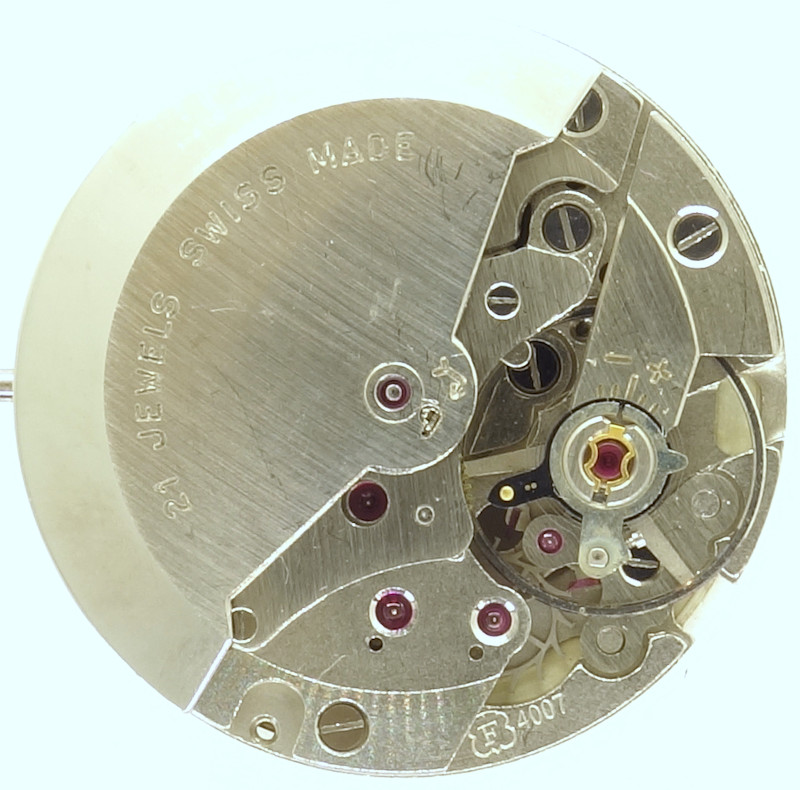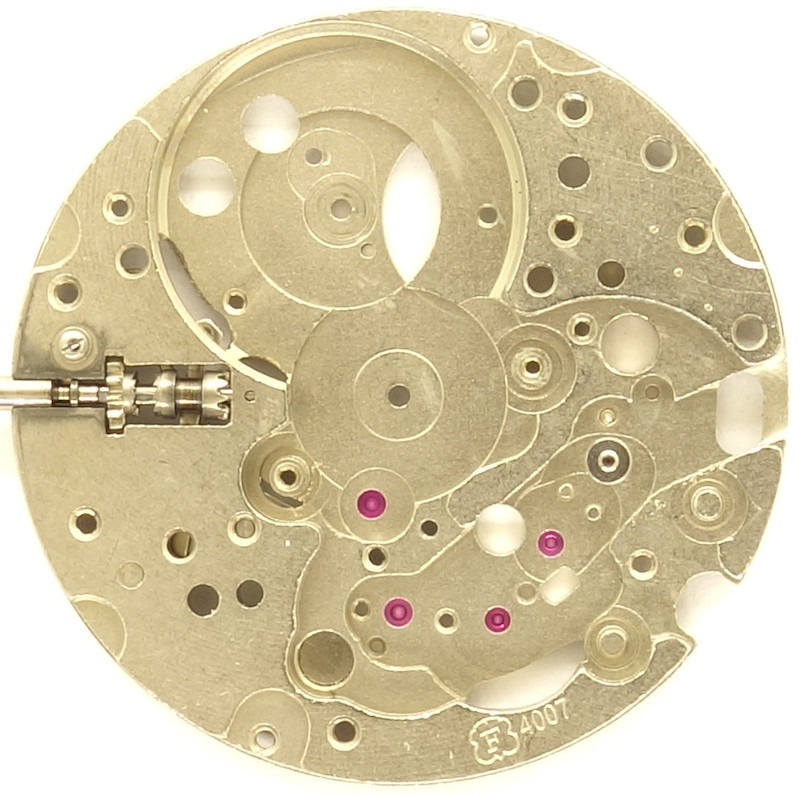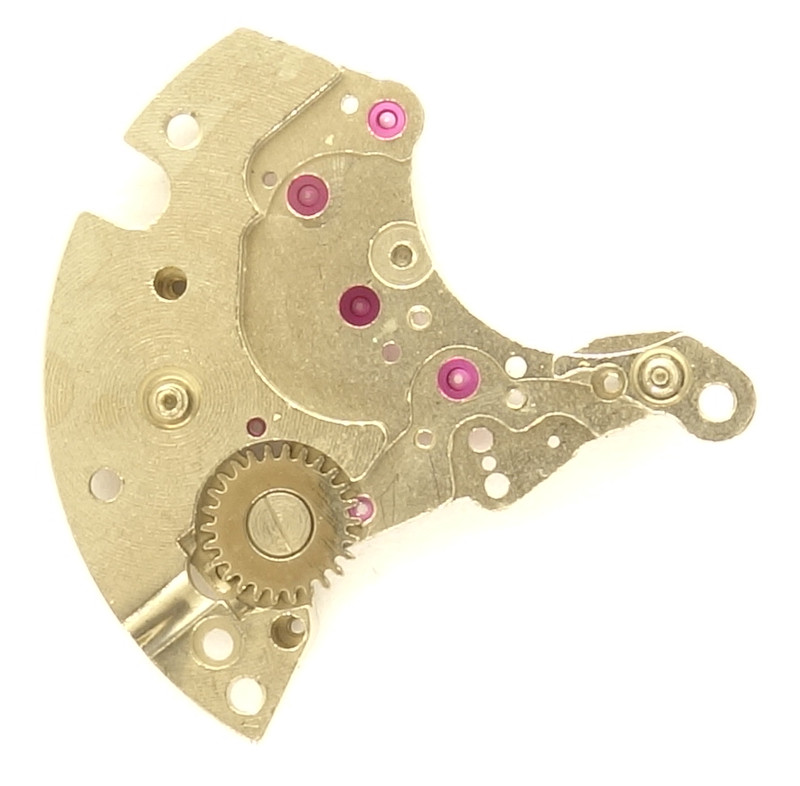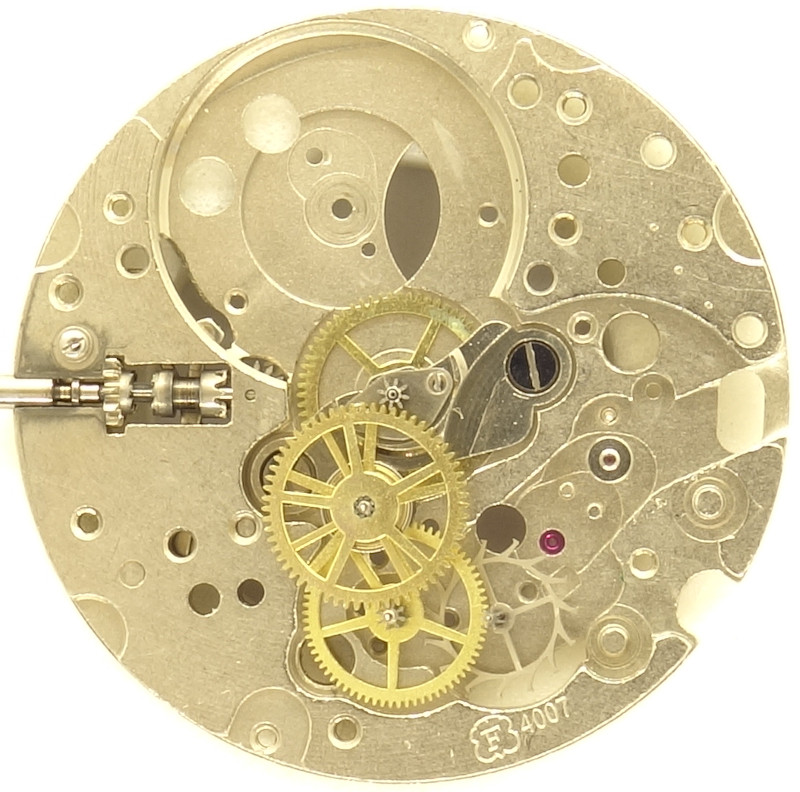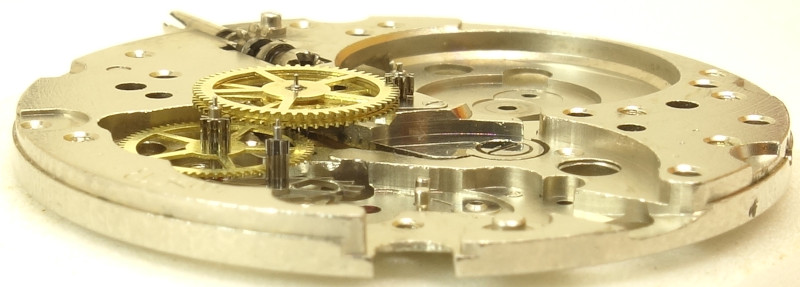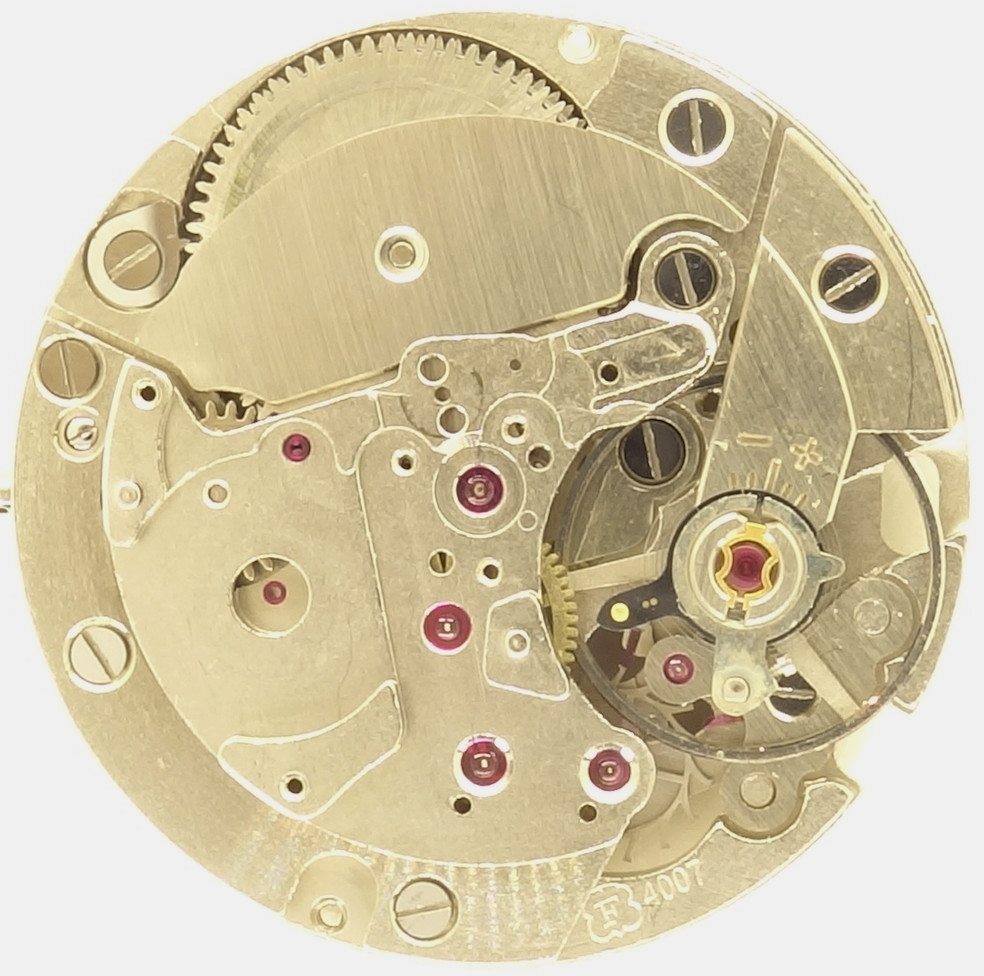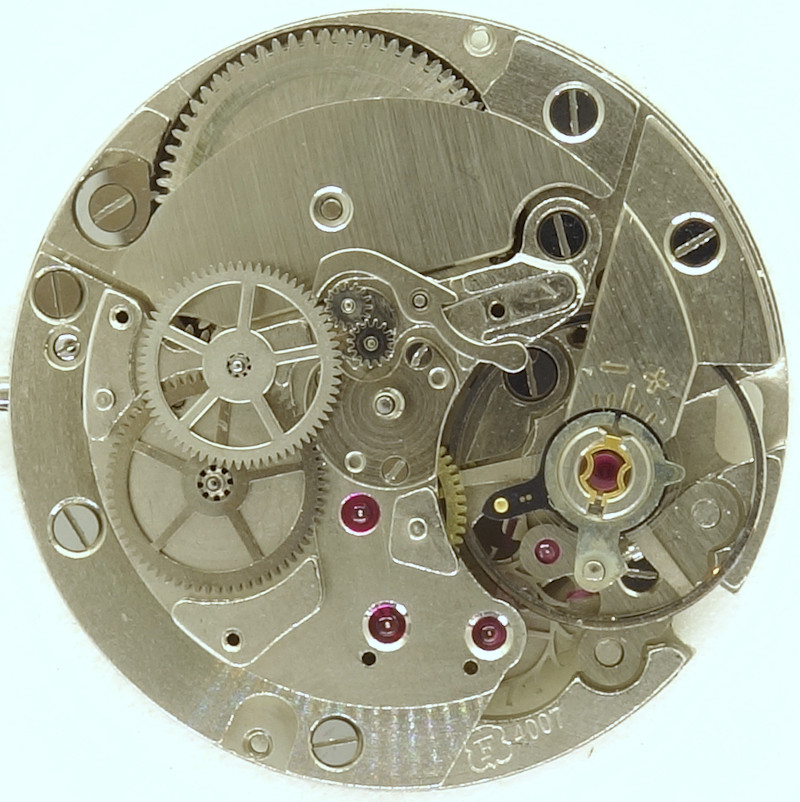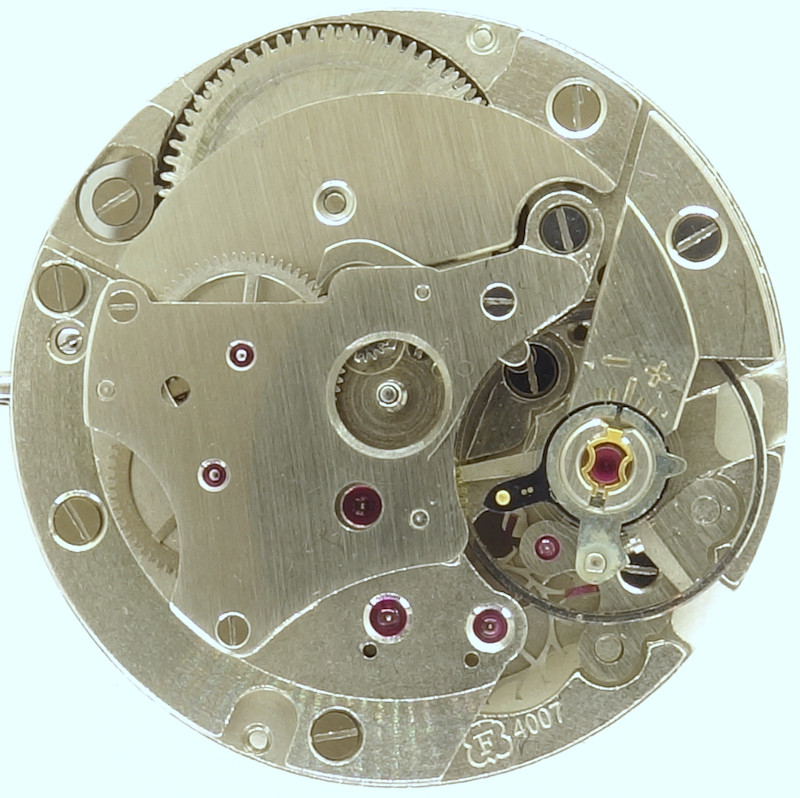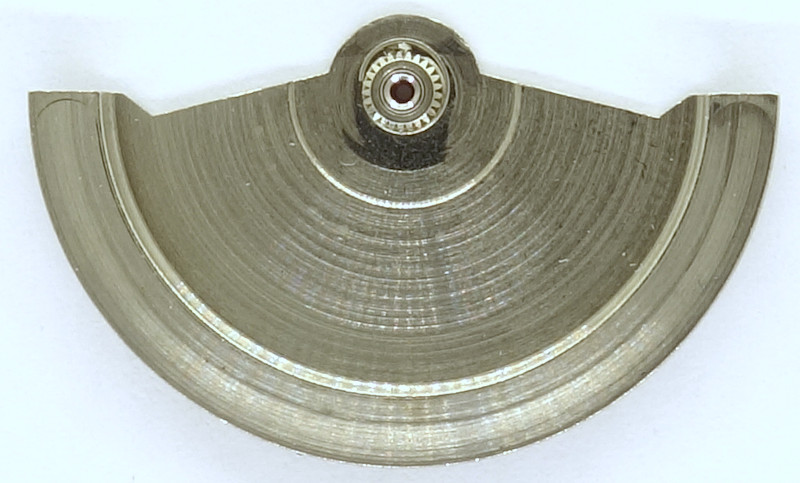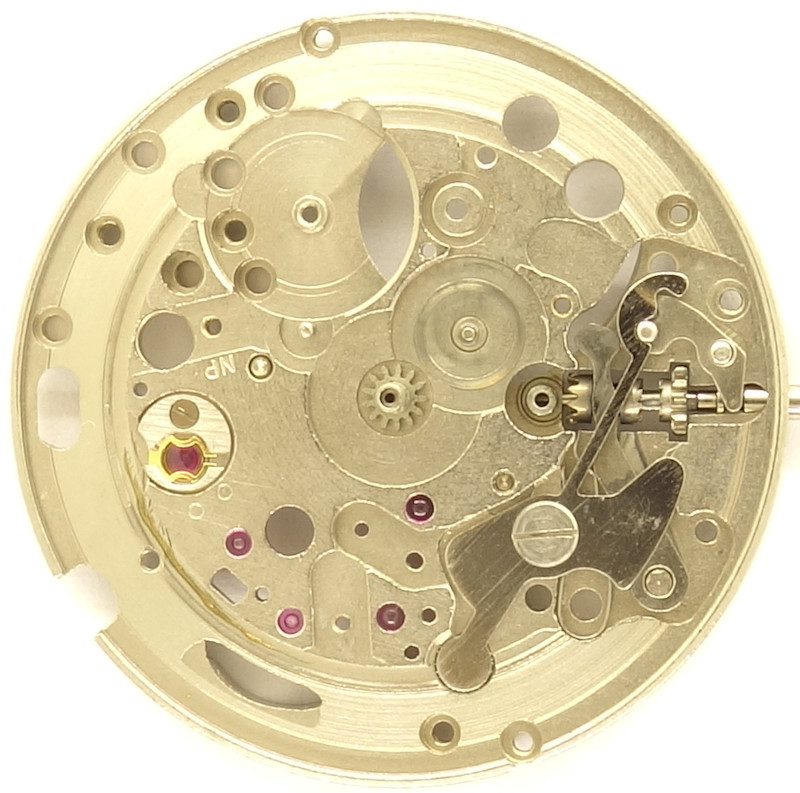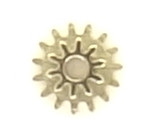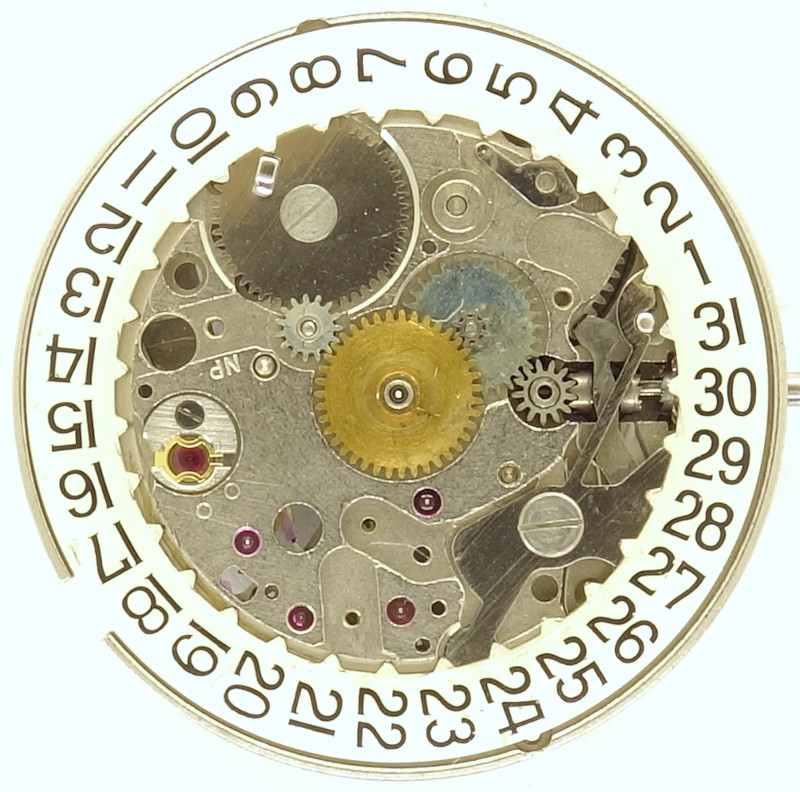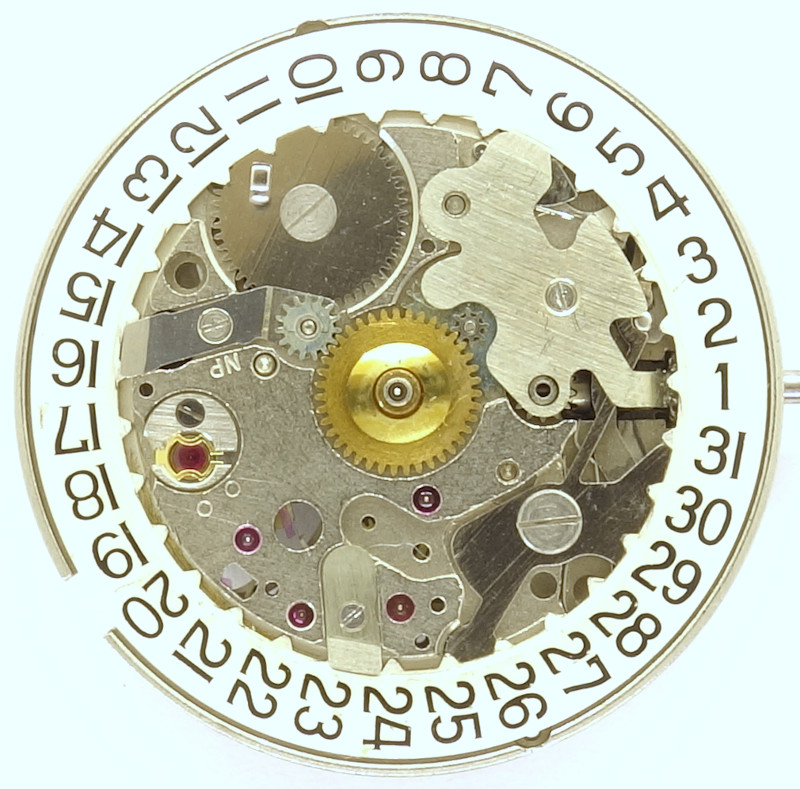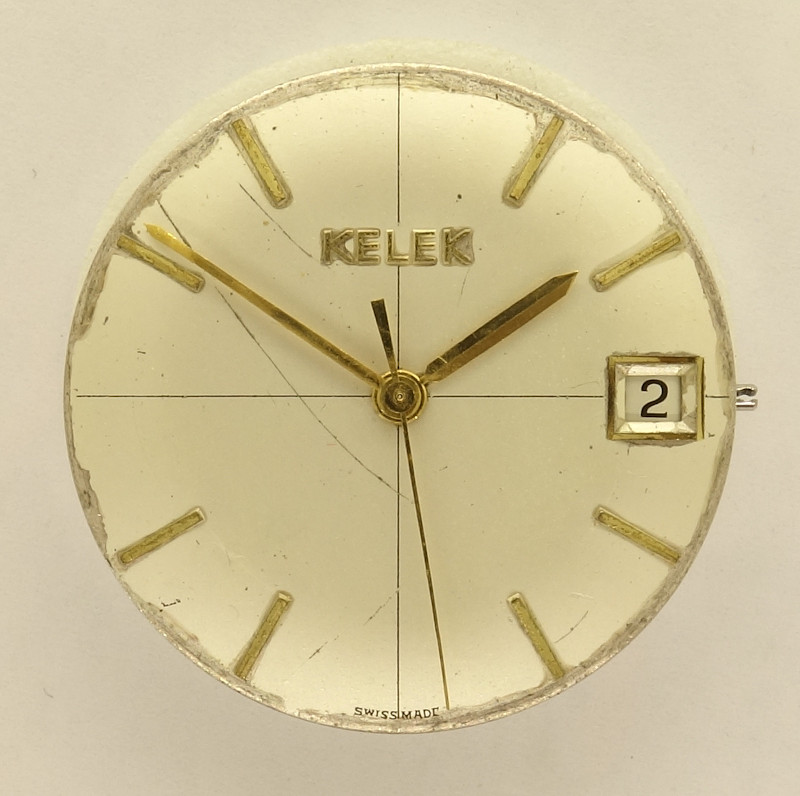Description
In the late 1950s, Felsa released their one but least series of selfwinding movements, which can be seen as the climas of the Felsa movement development. Without competition of battery (electromechanical and quarz) powered movements, it could still be drawn from the full in terms of construction.
The Felsa 4007 is the version with date indication and semi-fast quickset mechanism. Compared with the caliber 4002, the selfwinding mechanism was reworked a bit.
As expected from Felsa, all important bearings use rubies.
Probably to save space, probably to avoid interference with the selfwinding mechanism, the crown wheel was put onto the inner side of the gear train bridge.
The Felsa 4007 uses the classical geare train:
The mainspring barrel drives the center minute wheel, which is
beared under its own bridge. Afterwards, the double third wheel,
seconds wheel at 6 o’clock (which, in theory, could carry a decentral
seconds hand) and steel escape wheel follow.
The double third wheel engages with the center seconds pinion without a need for a spring to avoid fluttering of the center second hand.
The Felsa 4007 already uses a three leg anular balance without screws. It is beared between to Incabloc shock protections and beats with slow 18000 A/h. Unfortunately, it can be regulated only directly at the hairspring key.
Unlike the Felsa 4002, the gears of the selfwinding mechanism are mounted directly into the gear train bridge, and no longer in an own, detachable module.
The selfwinding mechanism is pretty simple, but geniuos. The main element in the rocking bar changer with two connected gears. Depending on the turning direction of the oscillating weight, either the upper or the lower gear engages with the transmission wheel. This, together with the ratchet ensures, that this ransmission wheel always revolves in the same direction and winds, by using a second reduction gear, the mainspring by engaging with the crown wheel.
The oscillating weight is axle beared and contains a ruby bearing for the axle.
The yet empty dial side shows the yoke winding system with its very rugged executed setting lever spring also the preparations for the calendar mechanism:
The calendar mechanism is a very simple construction: The hour wheel drives a tiny transmission wheel, which drives the date switching wheel.
The date ring advances semi-fast between 11pm and midnight and can be corrected by turning the time back to 10pm and forth.
As common for Felsa, the transmission wheel of the calendar mechanism is secured by a small plate, which is also one of the three securing plates for holding the date ring in position.
How well the Felsa 4007 really was, can be seen on the timegrapher results in the lab:
In the lab
The specimen shown here came gummed into the lab, and at least on the dial, you could see, that it was not treated well. The case was missing, it most certainly was a golden case, which was destroyed recently by melting it, although Kelek is a known upper class manufacturer.
The movement got a simple service with cleaning, oling and adjusting.
Timegrapher result
The rates of this “slaughter movement”, which certainly was torn off a golden watch and not handled with care, are nothing but sensational.In all positions, it runs perfect within the chronometer speficiation, especially the maximum deviation of four seconds over all positions is fantastic; the COSC certification would allow a devation of ten seconds here.
Of course, these numbers are only snapshots, and the low amplitude shows, that they won’t last forever, but they impressively show, how good the quality of Felsa movements was.
| horizontal positions | |||
|---|---|---|---|
| dial up | +2 s/d | 233° | 0.7ms |
| dial down | +2 s/d | 257° | 0.0ms |
| vertical positions | |||
| crown right (12 up) | -2 s/d | 222° | 0.5ms |
| crown up (3 up) | +1 s/d | 226° | 0.8ms |
| crown left (6 up) | +2 s/d | 212° | 0.1ms |
| crown down (9 up) | +2 s/d | 224° | 0.3ms |
Technical data
| Manufacturer: | Felsa |
| Caliber: | 4007 |
| Caliber base: | Felsa 4000 |
| Size: | 11 1/2''' (measured: 25,9mm) |
| Height: | 5,55mm |
| A/h: | 18000 |
| lift angle: | 52° |
| Number of jewels: | 21 |
| Escapement: | Pallet lever |
| Balance types: | Nickel anular balance (three legs) |
| Shock protection(s): | Incabloc |
| Balance bearing / direction hairspring: | Clockwise |
| Moveable stud: | yes |
| Adjust mechanism: | Hairspring key |
| Construction: |
|
| Construction type: | solid construction |
| Winding mechanism: | yoke winding system |
| Setting lever spring: | 1 hole(s) |
| Features: |
|
| References: | Flume: K3 - |
| Documentation (years): | 1962 |
| Inventory number: | 20053 |
